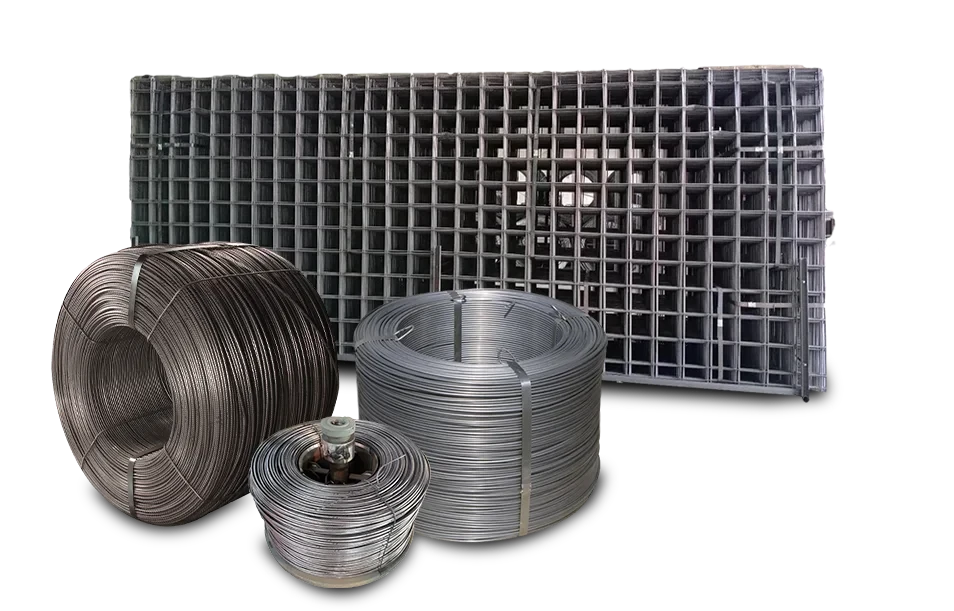Nov . 20, 2024 10:26 Back to list
deformed steel rebar
The Importance of Deformed Steel Rebar in Construction
In modern construction, the materials used are fundamental to the strength, durability, and longevity of structures. One of the most critical components of reinforced concrete is deformed steel rebar. This specialized steel reinforcement plays a vital role in enhancing the performance of concrete under various conditions, making it an indispensable element in building infrastructure.
Deformed steel rebar, characterized by its distinct surface patterns, provides superior bonding properties with concrete compared to smooth rebar. The surface of the rebar has ridges or grooves that improve adhesion, ensuring that the load is effectively transferred between the concrete and the steel. This is crucial because concrete is strong in compression but weak in tension. By incorporating deformed rebar, engineers are able to create structures that can resist tensile forces, allowing for greater design flexibility and structural integrity.
The use of deformed steel rebar dates back to the early 20th century when engineers began to recognize its advantages. Traditional smooth rebar was often inadequate for projects where tensile strength was a significant concern. The introduction of deformation patterns on steel bars revolutionized this aspect of construction. Today, deformed steel rebar is produced in a variety of grades and sizes, meeting diverse engineering specifications and standards set by organizations worldwide.
One of the key benefits of using deformed steel rebar is its ability to enhance the load-bearing capacity of concrete structures. Whether in bridges, buildings, or tunnels, deformed rebar can significantly increase the overall strength of the concrete. This added strength helps to minimize cracking and deformation over time, contributing to the durability of the structure. In regions prone to seismic activity, for instance, deformed rebar provides the necessary support to withstand potential earthquakes, making it a vital component in earthquake-resistant design.
deformed steel rebar

Moreover, deformed steel rebar is also advantageous for its cost-effectiveness. While the initial costs of materials may vary, the long-term savings achieved through enhanced structural performance and reduced maintenance make deformed rebar an economically sound choice for construction projects. By reducing the need for repairs and extending the lifespan of concrete structures, deformed rebar ultimately leads to lower lifetime costs.
Sustainability is another important aspect to consider in modern construction. As the construction industry pivots towards more sustainable practices, the use of recycled steel for producing deformed rebar helps minimize the environmental impact. Steel is one of the most recycled materials globally, and using recycled steel for rebar reduces energy consumption and lowers greenhouse gas emissions. This aligns with the industry’s growing commitment to sustainability and eco-friendly practices.
Despite its numerous benefits, it is essential for engineers and contractors to consider certain factors when incorporating deformed steel rebar into their designs. Proper detailing, placement, and cover are critical to ensuring that the rebar functions effectively. Additionally, the selection of the correct grade of rebar is also crucial, as it must align with the specific requirements of the project and the environmental conditions to which the structure will be exposed.
In conclusion, deformed steel rebar plays an essential role in modern construction, contributing greatly to the strength, durability, and overall success of concrete structures. Its ability to enhance the load-bearing capacity of concrete while providing cost-effective solutions and sustainability options makes it an invaluable resource for engineers and architects alike. As the demand for stronger, more resilient infrastructures increases globally, the importance of deformed steel rebar will only continue to grow, ensuring that buildings, bridges, and other structures can meet the challenges of tomorrow. Embracing the innovations in materials like deformed steel rebar will be fundamental for the future of construction, paving the way for safer, more efficient, and environmentally-friendly practices in the industry.
-
High-Quality Steel Grating Solutions for Industrial Applications | Durable, Safety, Customization
NewsJul.13,2025
-
Advanced Solutions-CompanyX|Enterprise Efficiency&Cost Reduction
NewsJul.13,2025
-
Sustainable Manufacturing-EcoTech Innovations|Waste-to-Energy System&Zero Emissions
NewsJul.13,2025
-
Welded Wire Mesh- Buildings Wiremesh Co., Ltd.|Durable Construction Material&Industrial Strength Solution
NewsJul.13,2025
-
Smart Production Solutions-Example Corp|AI Automation&IoT Monitoring
NewsJul.13,2025
-
Advanced Industrial Solutions-Advanced Industrial Solutions|Manufacturing Efficiency&Productivity
NewsJul.13,2025

